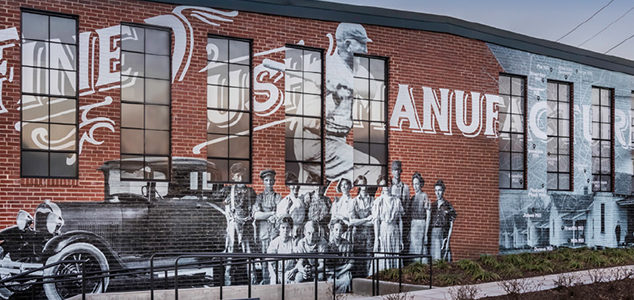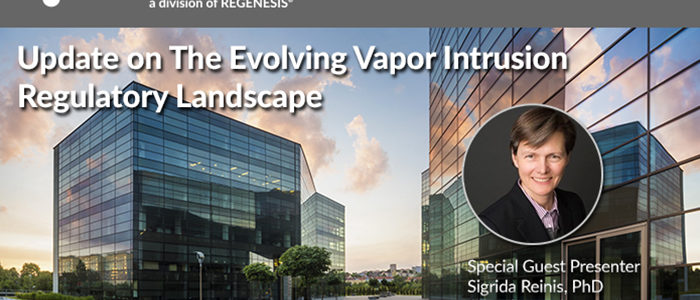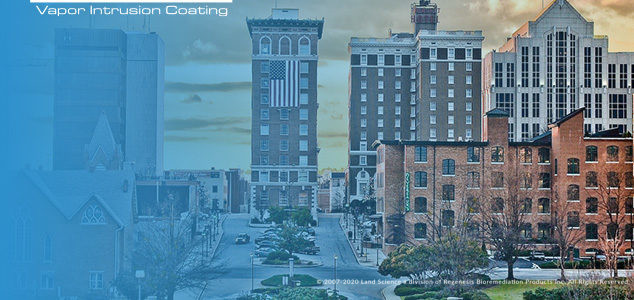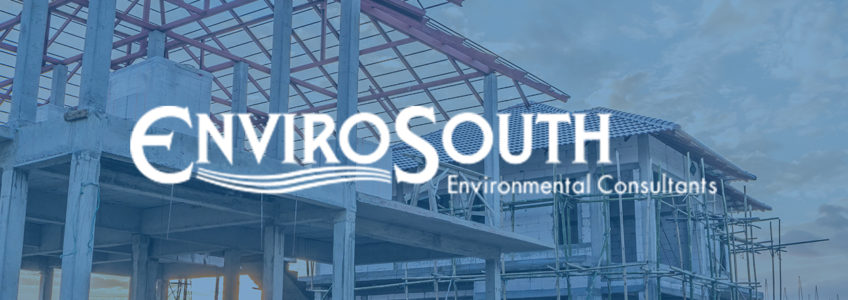Opportunity Zones: The Basics
The talk of “Opportunity Zones” seems to be growing with each passing month, though there is not a lot of information available. Opportunity Zones are a great way to not only receive tax benefits, but help better economically stressed communities in the process. This article helps acquaint those unaware of Opportunity Zones with how they work, and what makes them so important for the future of redevelopment efforts across the US.
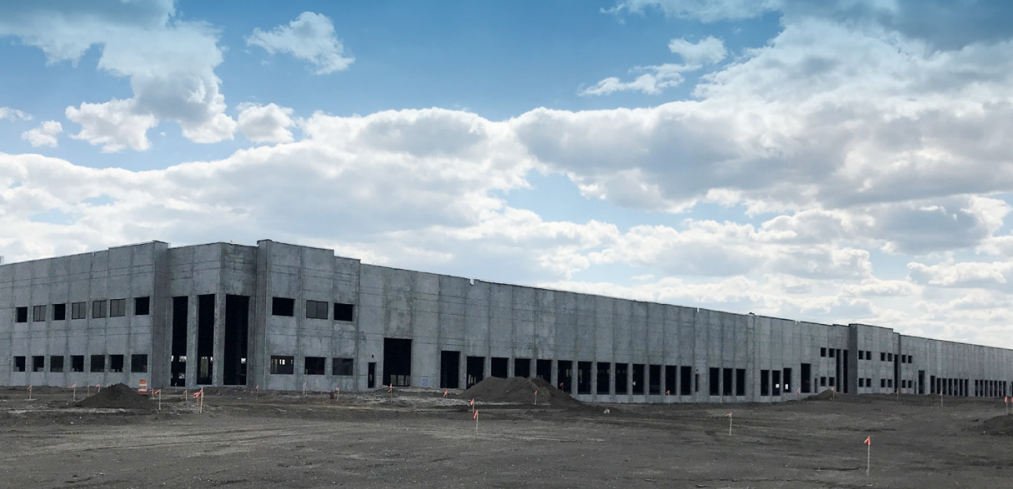
What is an Opportunity Zone?
In 2017, Congress established the Tax Cuts and Jobs Act to aid economically strained communities by turning designated areas into a potential real estate investment. By using private investment funds, the communities would benefit from economic growth while investors would receive tax benefits by re-investing their unused capital gains into Opportunity Funds. Today, up to 25% of low-income neighborhoods qualify, in a state, territory, or district are eligible for qualification. Once an Opportunity Zone is created in a certified area, it holds onto that title for 10 years until it is time for the zones to be re-evaluated.
Investing in an Opportunity Zone
If planning to invest in an Opportunity Zone, there are a few requirements that should be taken into consideration. As an example, with a real estate investment, there are certain restrictions put in place to ensure that the property in question is, in fact, bettering the community. For these real estate investments, properties can be either built or remodeled. It must be known though, that if an investor is choosing to remodel, there is a minimum on how much the investor must invest in the project. Say you, as the investor, bought a pre-existing building for $2 million and only wanted to upgrade/remodel it, in order to comply with the Opportunity Zone rules, you would need to spend at least $2 million and 1 dollars. An investor must put more into the project more than the amount they purchased it for – even it that means the investment is only $1 more than the purchase price.

It is also essential that investors note there are “right” and “wrong” types of investments, especially when it comes to real estate. As an example, the “wrong” investments are those that are not much use to community, with examples such as country clubs, luxury housing, gambling facilities, and liquor stores. Keep in mind, communities where Opportunity Zones are located are those with greater financial hardships. The examples provided either create greater financial burden for the residents of the community or are of no use to them. The goal of the Opportunity Zone project is to improve and bring wealth to low-income communities, not to bring in establishments that can do them more harm than good.
The “Right” Investments – Real Estate Example
It is essential when choosing a real estate investment to keep in mind the question of “is this bettering the community”? Great opportunities can come in the form of business parks and warehouses, due to their ability to generate job growth. In 2015, Ashley Capital began a project to turn Hazel Park Raceway, a horse track in Hazel Park, Michigan, into industrial offices and warehouses. The project generated 675,000 square feet of the manufacturing and industrial space now known as the Tri-County Commerce Center. The raceway was located in an Opportunity Zone, so Ashley Capital would receive the provided tax benefits for building within the zone, all the while creating the possibility for job growth in the area.
What is an Opportunity Zone Fund?
Opportunity Zone Funds are a way for investors to invest in Opportunity Zone projects. They are a US corporation or partnership planning on investing at least 90% of its holdings into a qualified Opportunity Zone. They can be used, as stated before, to start ground-up on new buildings, or significantly improve existing ones. These investments allow investors to receive tax benefits immediately and long term on capital gains.
When using an Opportunity Fund to invest, there are three different types of investments that are available. The first is through partnership interests in a business that operates within an Opportunity Zone; the second is owning stock in a business that executes all of its projects and affairs in an Opportunity Zone, the third, is by investing in property located within an Opportunity zone such as real estate.
If looking at it on a 10-year timetable, like the one provided by fundrise.com, there are a few crucial years to note. For the first year, taxes are deferred on the capital gains. For the 5th year, the tax on the capital gains will be reduced by 10%. On the 7th year, tax on the capital gains is reduced by 5% from the 5th year now making it a total of a 15% reduction. On the 10th year, the capital gains taxes are eliminated on potential profits from the Opportunity Fund. It is important to note that in order to take advantage of this program, an investor has to take their capital gains and invest it into an Opportunity Fund within 180 days of the sale of the asset.
According to Adam Hooper for WealthManagement.com, “Essentially, the federal government is allowing the investor to keep the capital gains at 0 percent interest and use those funds to invest in one of these Opportunity Zone projects for 10 years. After 10 years, the investor pays no capital gains tax on the appreciation of the asset”.
How REGENESIS and Land Science Can Help
When investing in an Opportunity Zone, there may be a unexpected issues that come with the land. There is a possibility that the previous inhabitants of the site created negative environmental impacts, and cleanup may be necessary before further progress can be made.
That’s where REGENESIS and Land Science can help. As investment continues into Opportunity Zones, developers will increasingly look to develop brownfield sites – properties with environmental impacts preventing redevelopment. By integrating site cleanup with wider community plans, there can be significant economic benefits, such as the creation of new jobs or an increase in housing values, which can stimulate the revitalization of distressed neighborhoods.
To learn more about handling environmental impacts at opportunity zone sites, download the eBook 11 Tools and Resources for Maximizing Your Investment in An Opportunity Zone.
When it comes to site cleanup, there are many available approaches, each of which must be carefully considered to achieve maximum impact both technologically and economically. Selecting the proper technology to deal with environmental issues can lead to immediate cost savings due to the streamlining of construction schedules or as compared to other applicable remedial technologies or future cost savings from the reduction of overall risk.
The Benefits of Using Nitrile to Mitigate Vapor Intrusion
Nitrile or nitrile-butadiene rubber (NBR) has an abundance of properties that make it an ideal material to be utilized in barrier systems that prevent subsurface contaminants from migrating into the indoor airspace of buildings. It has good abrasion/tear resistance, good compression set, resistance to heat, water, and chemicals. But let’s take a close look at why nitrile has become of key importance to the vapor intrusion mitigation industry.
Gas Permeability and Chemical Resistance – Why Nitrile is So Protective

Many synthetic rubber production companies rate Nitrile’s gas permeability as good. Its gas resistance depends on the level of acrylonitrile which is commonly referred as the ACN content. The typical ACN content ranges from 14% to 50% because the more acrylonitrile included in the copolymer, the resistance to oil and gas permeation increases; however, the higher the ACN content, the lower the flexibility of the rubber. Ergo, the common ACN content percentage for the nitrile to have low permeability while still being flexible is 36%. The possible reason for the good gas permeability is that when butadiene and acrylonitrile are combined in the mixing process, the two polymers react to each other a create strong cross-linked valent bonds. These bonds leave little room for most gases to pass through, except for ozone, ketones, esters, and aldehydes.
So it makes sense that nitrile can be of tremendous value to the vapor intrusion world. The primary goal of practitioners in this industry is to protect human health by blocking contaminant gases from migrating from a subsurface source into the indoor air space of a building.
An acknowledged weakness in many vapor barrier systems is in the slab penetration and perimeter termination locations, where spray-applied core material composed of Styrene-Butadiene (SBR)- modified asphalt is used. While excellent at repelling water, aggressive chemicals such as petroleum solvents and chlorinated volatile organic compounds (VOCs) will permeate into the SBR-modified asphalt at a relatively high rate, particularly in these vapor intrusion sensitive areas of the building construction.
The Research and Development Scientists at REGENESIS and Land Science know this, and that’s why they developed Nitra-Seal.
Nitra-Seal offers a substantial upgrade as it employs a more chemically resistant nitrile latex instead of the more susceptible SBR material. Nitrile, due to some of the reasons explained above, is recognized throughout the environmental engineering industry as being more chemically resistant than rubber or SBR and is often used in personal protective equipment when working on hazardous waste sites (e.g. nitrile gloves). Laboratory testing has shown up to 10X higher chemical resistance when compared to any other spray applied vapor barrier material on the market.
Puncture Resistance
If you’ve been to a doctor’s office lately, you’ll likely see that the gloves sitting there on the counter are no longer latex; they’re nitrile. Physicians offices have moved away from latex and to nitrile gloves. Why? Because not only is nitrile more chemically resistant; it’s more durable too.
So the R&D team at Land Science again applied this concept when they were developing Nitra-Seal. With vapor intrusion regulatory standards becoming ever more complex and stringent, there is an emerging need in the industry for better, more reliable protection against contaminant vapor intrusion.
This is why nitrile is so valuable. It will provide better protection, and that protection will be more durable and reliable due to puncture resistance. Nitra-Seal forms a highly puncture resistant barrier that greatly reduces the chance of damage occurring after installation and prior to the placement of concrete.
The added value brought by nitrile’s durability provides a critical advantage with new building construction.
Nitrile can be applied as sheets or as liquid depending on what it needs to be applied to. For instance, if nitrile rubber is needed to seal plumbing, then liquid is required; but if an entire floor needs to be sealed then nitrile sheets are the best option. There is no need to lose sleep over whether nitrile will leave even a sliver of a crack on the application site because Nitrile can fit into any nooks and crannies of any site where it is spray-applied, including seams and penetrations of a vapor barrier base layers. In the end, once a site is sealed, there is an excellent chance that the seal will last for years without letting gas permeate or being severely damaged.
When the other layers of the Nitra-Seal system are combined with its spray-applied Nitrile-based core to seal all seams and penetrations, the end result is a barrier that is highly resistant to a broad range of chemical pollutant vapors.
Nitrile is a versatile material that is utilized in many different applications, from sealing gas pipes to providing doctors protection in gloves. But it’s also especially valuable to the vapor intrusion mitigation industry, due to its low gas permeability, chemical resistance, and easy application.
Incorporating CSIA in Vapor Intrusion Investigations
Land Science is pleased to present a webinar with Dora Taggart, President of Microbial Insights, Inc., and Sam Rosolina, PhD, Analytical Chemist and Manager of the Compound Specific Isotope Analysis (CSIA) Laboratory at Microbial Insights. In this webinar, Dora and Sam discuss incorporating CSIA in vapor intrusion investigations. They are joined by Tom Szocinski, CEP, Director of Vapor Intrusion at Land Science, who discusses innovative new vapor barrier technologies that are more protective and more cost-effective.
Learn the following in this free webinar:
- A primer for sites impacted with contaminant vapor intrusion
- How CSIA is being used to fingerprint different contaminant sources
- Using CSIA to help identify the underlying cause of decreased indoor air quality
FAQ: CSIA and Vapor Intrusion
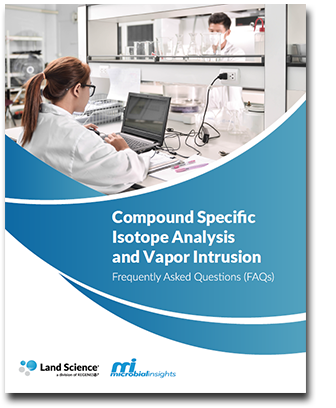 The questions summarized in this FAQ as part of the Land Science “Distinguished Speaker” webinar series, were provided by our guest presenters, Dora Taggart and Sam Rosolina, PhD in response to questions fielded throughout the webinar presentation. REGENESIS and Land Science are grateful to both Ms. Taggart and Dr. Rosolina for sharing their expertise. Land Science is dedicated to providing relevant, industry-leading content in support of client partners globally. Any use or reproduction of the contents of this FAQ document must be approved by Land Science, REGENESIS and/or Microbial Insights.
The questions summarized in this FAQ as part of the Land Science “Distinguished Speaker” webinar series, were provided by our guest presenters, Dora Taggart and Sam Rosolina, PhD in response to questions fielded throughout the webinar presentation. REGENESIS and Land Science are grateful to both Ms. Taggart and Dr. Rosolina for sharing their expertise. Land Science is dedicated to providing relevant, industry-leading content in support of client partners globally. Any use or reproduction of the contents of this FAQ document must be approved by Land Science, REGENESIS and/or Microbial Insights.
Want to learn more about CSIA and Vapor Intrusion? Download the Q&A from the webinar here:
View webinar recording
Complete the form below to view the recording of this free webinar.
Vapor Barrier Speeds Redevelopment of Former Textile Mill
A former textile mill operated from 1926 through 1983. Throughout the years in operation, there were no regulatory guidelines in place regarding the use and disposal of hazardous chemicals used on site. As a result, once operations ceased, the site was classified as a brownfield. The building has been vacant since the early 2000’s and the hazardous environmental conditions have made redevelopment a challenge. However, tax credit financing made it possible for developers to purchase the 24,500 square-foot building in 2015. The developers received $9 million in tax credit financing, making this remediation and restoration project possible. The tax credits included the New Markets tax credits and South Carolina Textiles Communities Revitalization Act.
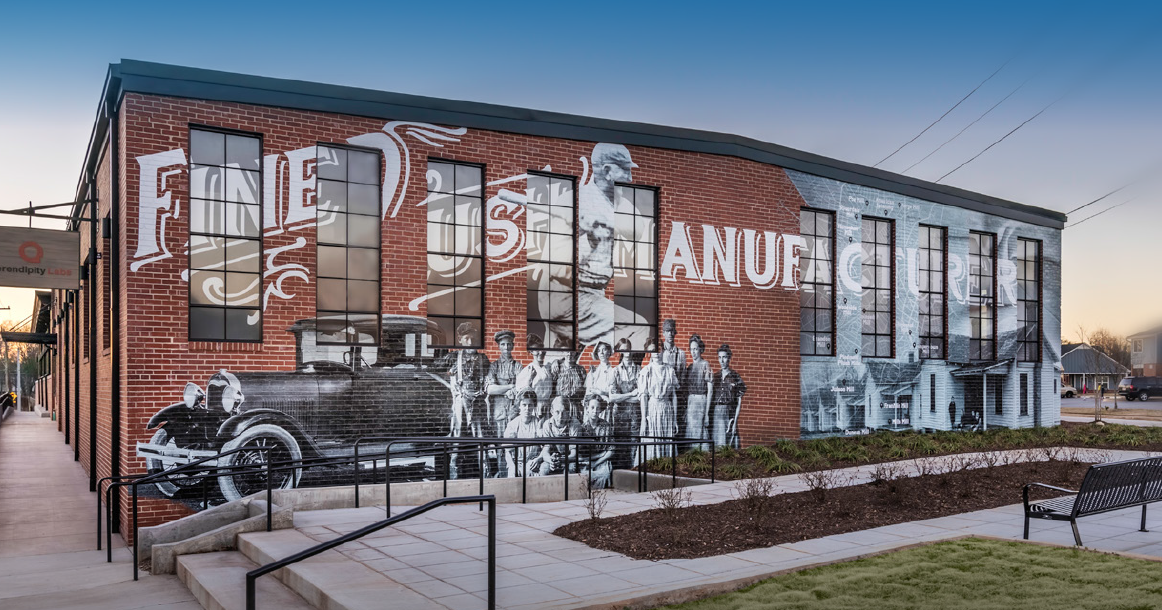
This case study features the following:
- Site owners are pleased that the quick installation of Land Science Contaminant Vapor Barrier System allowed the project to meet construction timeline goals
- The support of the state of South Carolina through the tax incentive package made it possible for developers to redevelop this brownfield site into new jobs and businesses for the community
- The construction and renovations included elements of historic preservation
© 2021 All rights reserved. Geo-Seal is a registered trademark of Epro Services Inc.
Update on The Evolving Vapor Intrusion Regulatory Landscape
Land Science is pleased to present a webinar with vapor intrusion expert Sigrida Reinis, PhD, PE, Associate at Langan. During this webinar presentation, Dr. Reinis discusses the increasingly challenging vapor intrusion regulatory landscape, and solutions to address vapor intrusion challenges at sites. Rick Gillespie, REGENESIS and Land Science Senior Vice President, North America also presents innovative new vapor barrier technologies that are more protective and more cost-effective.
Learn the following in this free webinar:
- Changing trends in the vapor intrusion regulatory landscape at the federal and state levels
- How to meet the demands of increasingly data-driven regulations
- Case studies of vapor intrusion sites where extensive data-driven challenges were addressed
View this Free Webinar
Complete the form below to view this free webinar.
Retro-Coat Utilized to Prevent Harmful TCE and Chloroform Vapor Intrusion
A former industrial manufacturing facility in Greenville, SC was purchased for redevelopment in 2017. Building improvements were planned to include a warehouse, offices and self-storage units to serve a growing commercial area. Now located within an urban commercial land use area of Greenville, redevelopment plans included converting the industrial warehouse building into climate controlled self-storage units, and renovating the office into an apartment unit and office.
Prior to purchasing the site in 2017, the current site owners entered into a Voluntary Cleanup Contract and Brownfields agreement with the South Carolina Department of Health and Environmental Control (SCDHEC). The Brownfields agreement allowed the site owners to purchase the site while receiving SCDHEC liability protection for existing environmental contamination by agreeing to perform certain environmental assessment, mitigation, or remediation activities.
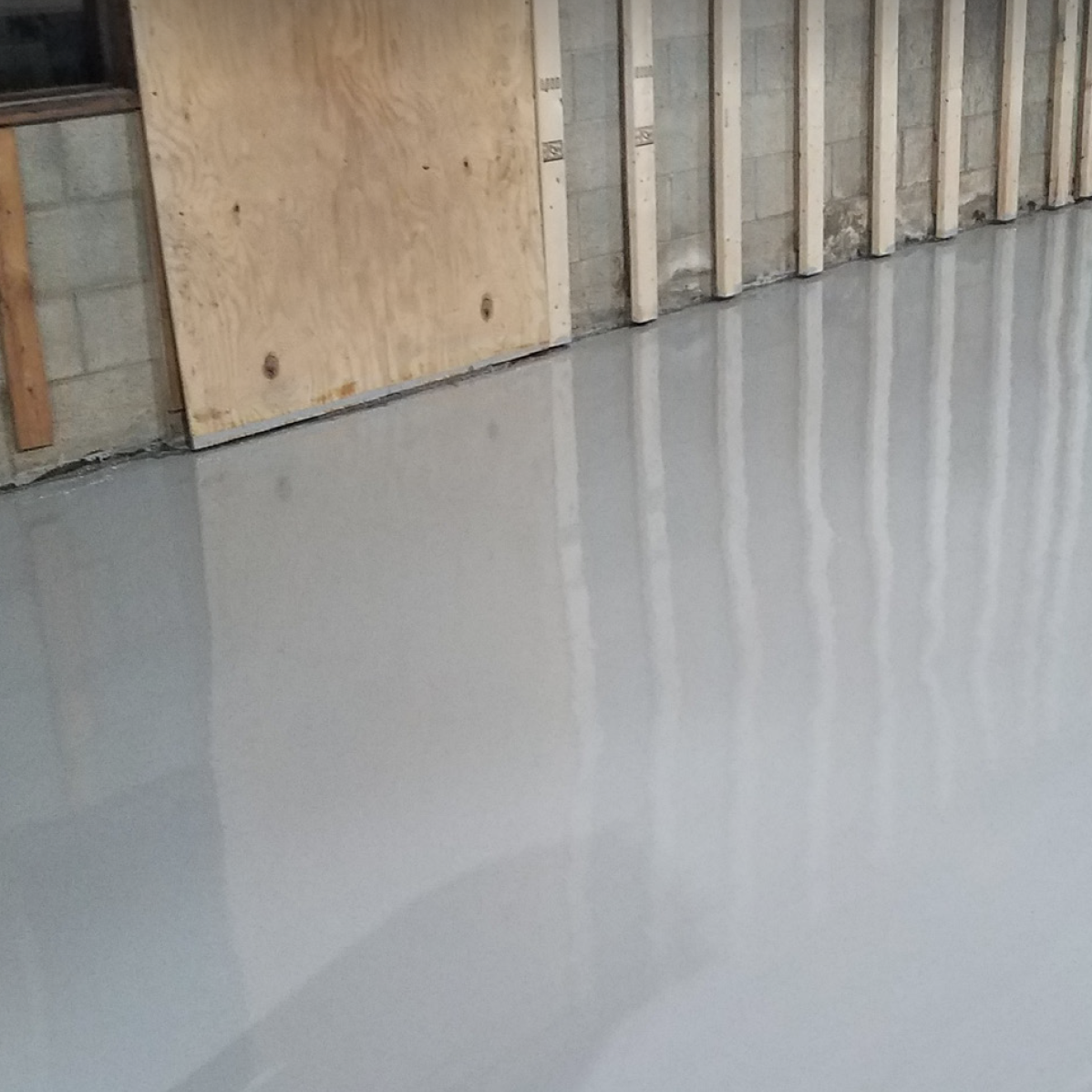
This case study features the following:
- The Retro-Coat barrier and Vapor-Vent system were incorporated into already planned renovations, saving the site owner time and money.
- Retro-Coat is resistant to both TCE and chloroform and is a wearing surface, rated for foot and forklift traffic.
- The Retro-Coat system layers cure quickly, reducing building downtime.
- The combination of Retro-Coat and Vapor-Vent was chosen as a remedial solution to mitigate the risk of harmful vapor intrusion.
Client Spotlight: Thomas Donn, Senior President of EnviroSouth
 When Thomas Donn decided to launch his own environmental consulting business in March of 2001, his primary goal was to provide practical solutions to emerging environmental challenges. His objective, along with his then business partner, was to grow a firm that could clearly explain complex technical and regulatory issues in a manner that was easily understandable to a wide range of clients. They also wanted to cement and deliver on their mantra of, “on budget, on time, and no surprises”, as a way to firmly differentiate themselves from other environmental remediation firms. Fast forward to today, and it is clear Donn has successfully grown and positioned EnviroSouth, a valued Land Science® and REGENESIS client, into a leading environmental consulting company. Headquartered in Greeneville, SC, EnviroSouth offers its clients an array of services that include soil and groundwater remediation, real estate environmental site assessment, soil and groundwater contamination assessment, Brownfields property restoration, and other environmental related services. Donn shares, “We have become successful in setting ourselves apart from the competition. And that’s why many of our clients rely on EnviroSouth environmental consultants year after year for all their environmental needs.”
When Thomas Donn decided to launch his own environmental consulting business in March of 2001, his primary goal was to provide practical solutions to emerging environmental challenges. His objective, along with his then business partner, was to grow a firm that could clearly explain complex technical and regulatory issues in a manner that was easily understandable to a wide range of clients. They also wanted to cement and deliver on their mantra of, “on budget, on time, and no surprises”, as a way to firmly differentiate themselves from other environmental remediation firms. Fast forward to today, and it is clear Donn has successfully grown and positioned EnviroSouth, a valued Land Science® and REGENESIS client, into a leading environmental consulting company. Headquartered in Greeneville, SC, EnviroSouth offers its clients an array of services that include soil and groundwater remediation, real estate environmental site assessment, soil and groundwater contamination assessment, Brownfields property restoration, and other environmental related services. Donn shares, “We have become successful in setting ourselves apart from the competition. And that’s why many of our clients rely on EnviroSouth environmental consultants year after year for all their environmental needs.”
As the founder, President, and Principal Hydrogeologist of EnviroSouth, Donn’s day-to-day responsibilities include advising clients on the technical and regulatory options related to purchasing and remediating commercial and industrial Brownfield properties, as well as troubleshooting projects to ensure the outcome matches client expectations and passes through the regulatory approval process. When asked what he enjoys most about his work, he points to the satisfaction of seeing properties converted into reusable sites, suitable for redevelopment. He continues, “I appreciate being part of the vibrant growth and remediation of a Brownfield site as a key advisor and facilitator.” Donn continues, “Transforming blighted properties that are often eyesores, into productive and attractive facilities which bring jobs to communities is very gratifying. I also enjoy developing our professional staff of geologists, engineers, and environmental scientists, since it helps them become more independent and confident in their abilities, translating to their success on projects they manage.” Prior to starting EnviroSouth, Donn gained valuable experience in the environmental remediation industry, serving in several key positions, including Geologist, Hydrogeologist, and Environmental Services Department Manager, as well as Branch Manager for a 27-person branch office, where he performed environmental consulting, ecological services, geotechnical engineering and construction materials testing.
Prior to beginning his professional career, he earned a B.S. in Geology from the University at Buffalo and a M.S. in Geology from Miami (Ohio) University. He shares, “I chose a career in environmental sciences because I had a keen interest in geology and a desire to provide effective and cost-conscious solutions to help contribute to cleaning up our planet.” To stay current with industry trends and the latest technology, Donn often attends technical conferences to maintain familiarity with new remediation methods, as well as refinements of design and field techniques. In addition, he occasionally serves as an expert witness, and has authored several white papers and articles for publication.
When it comes to working with Land Science, Donn says he appreciates their advanced experience and responsiveness. He continues, “Land Science provides good technical resources and they are proactive to our requests for quotes. They also offer excellent customer service and assistance with our logistical needs. We recently completed a project with them on a former textile mill that was redeveloped. They were very helpful in ensuring the project was a success , including coordinating with installation contractors.” The project included the installation of Geo-Seal® and Vapor-Vent™. He explains, “The project was a Brownfield redevelopment of a long-shuttered textile mill in South Carolina. Based on the poor condition of the concrete and wood floor, the client decided to remove the existing floor, so it provided a perfect opportunity to install a top of the line vapor barrier, such as Geo-Seal®, to prevent TCE in the shallow soils from entering the renovated building. The installation was inspected thoroughly by EnviroSouth’s own in-house LandScience® certified inspector. Subsequent testing showed the indoor air was free of TCE, and the roof vent showed elevated TCE concentrations as evidence that the vapor vents were doing their job as planned.”
Residing in Greeneville, SC, outside of work Donn enjoys wilderness backpacking trips, especially to his favorite destination in Glacier National Park. He shares, “Glacier is the perfect place for getting away from it all with no cell phone coverage! There is also the rush of knowing that around any corner you could come across a bull moose or an angry mama grizzly!” He has also enjoyed volunteering at a local YMCA, where he holds a Board position, and serves on the March of Dimes Real Estate Executive Committee for his local chapter. When asked what he sees the future holds for environmental remediation, Donn points to an increased emphasis on risk assessment as a growth area. He continues, “I believe the trend toward performing remediation based on risk assessment is here to stay. Remediating sites that have a likelihood of adversely impacting human or environmental receptors just makes good sense. The recent trend of looking much closer at and preventing the presence of potentially harmful vapors inside buildings is one of the most logical and cost-effective types of remediation we can provide. For the past few decades, environmental regulators were requiring millions upon millions of dollars to be spent on cleaning up soil and groundwater, but largely ignored the effects of breathing harmful vapors. This new awareness of evaluating vapors seems obvious now, but it was just a matter of the awareness of the environmental regulators and good technical practitioners to bring the science to this point.” And what advice would he offer to those considering a career in the environmental remediation industry? He concludes, “I would suggest becoming involved with an environmental services company early on, perhaps as an intern. We have had several summer interns from Clemson University’s highly regarded Environmental Engineering program. This provides them the real-life aspects of environmental consulting work, especially working outside in the field.”
Land Science is proud to have Tom Donn, President and Principal Hydrogeologist at EnviroSouth, as a valued client and partner in environmental remediation, and appreciates his technical experience and diverse contributions in providing successful remediation outcomes for Land Science® and its clients.



